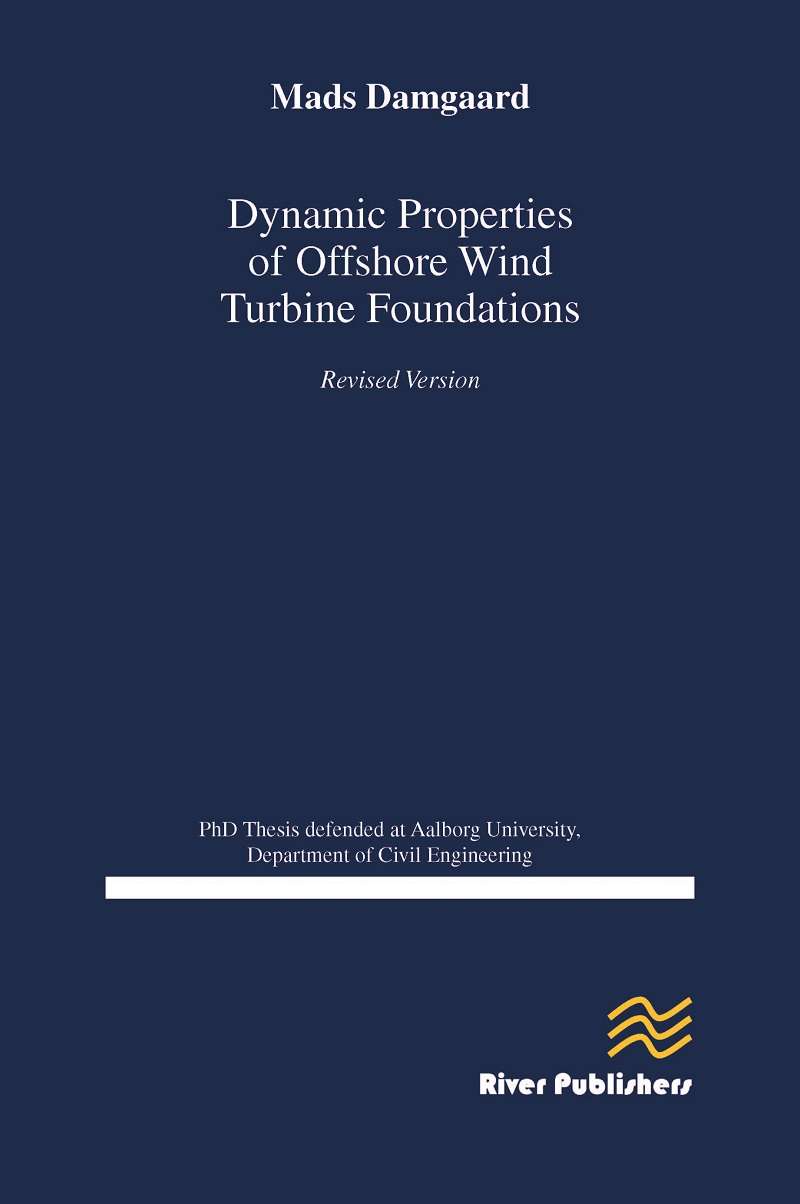River Publishers Series in
Dynamic Properties of Offshore Wind Turbine Foundations
Author: Mads Damgaard, Department of Civil Engineering, The Faculty of Engineering and Science, Aalborg University, Aalborg, Denmark
Well-covered in the field of earthquake engineering, the dynamic response of civil engineering structures is highly dependent on the impedance of the soil-foundation system. For offshore wind turbine applications, however, the hysteretical and geometrical dissipation effects in the soil are difficult to incorporate for time-domain simulations. Accurate assessment of the fatigue limit state requires simulations of several thousands of load cases, and the consequential high computational burden necessitates a structural model with few degrees of freedom that capture the most important effects of the dynamic wind turbine response. To overcome this, sequential or fully coupled aero-hydro-elastic simulations are often conducted where the soil-structure interaction is incorporated via the principle of an equivalent fixity depth or by a so-called Winkler approach with static springs along the foundation and soil damping applied as modal damping. The methods, however, do not account for the dynamic stiffness due to inertia forces, and a well-defined representation of the dissipation effects in the soil is neglected.
This in turn forms the basis of the current PhD thesis that examines the soil-foundation interaction and its influence on the natural and dynamic vibration characteristics of offshore wind turbines based on full-scale modal testing and simple numerical quasi-static simulations. In addition, the thesis presents a novel, time-efficient coupled aero-hydro-elastic model of the wind turbine system via a consistent lumped-parameter approach accounting for the dissipation effects through wave radiation and material damping in the soil.
KEYWORDS: Fatigue; Free vibration decay; Lumped-parameter model; Operational modal analysis; Soil dynamics; Soil-structure interaction; Soil variability; System identification; Wind turbine; Winkler approach
